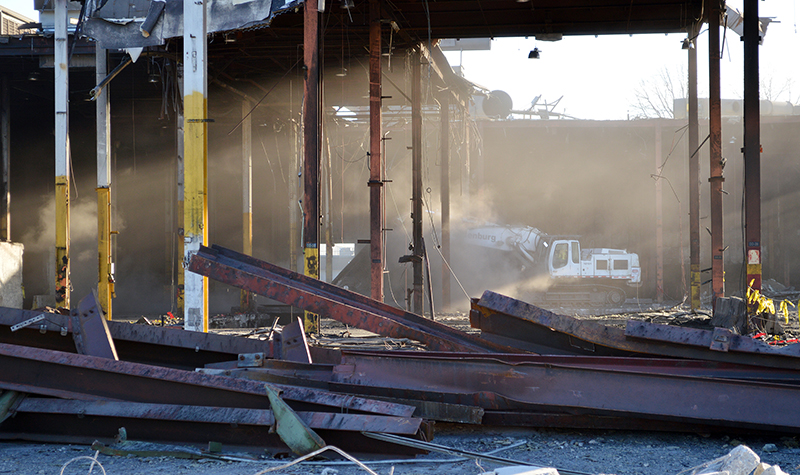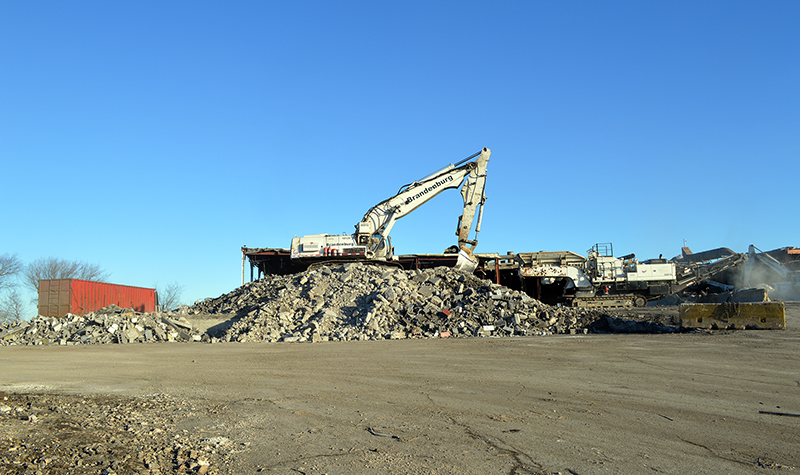Material Recycling: A Sustainable Approach to Demolition and Transformation

Should a building be demolished? That is a question many owners face when deciding what to do with an existing property. Cost, schedule, and operational impacts are all important considerations. From the perspective of environmental/sustainability considerations, it would be beneficial to reuse whenever possible. The fewer structures that are razed means more energy and materials are saved and less debris ends up in landfills. Moreover, future construction will include far greater power and insulating efficiencies as well as water-saving incentives designed into the building plumbing and equipment.
But when demolition is unavoidable, material reuse provides an opportunity for salvaging/recycling as much material as possible for use in future projects.
What Considerations Are Made When Deciding If a Building Needs to Be Demolished?
1. What’s the building’s current use versus its desired use?
If the building is not structured to accommodate its desired use, it may have a negative impact on the owner’s operations. For example, the current building may not have enough usable space to meet the property owner’s needs. If it’s not feasible to expand the current structure, starting from scratch might be the only option.
Considerations also should include the land use of the site itself, including parcel impacts due to building modification or expansion. Additionally, recycling efforts can be performed here too, from appurtenances in relation to the building (parking pavement, sewer systems, concrete/metal pseudo dwellings, etc.)
2. What is the physical condition of the building and its systems?
If the structure and its mechanical and electrical systems are not physically sound, the conversion itself will be more difficult, and the end cost will be greater. Old buildings need to meet current codes, and sometimes it just costs too much to do so.
Storm sewer systems can impact the building’s conditions as surrounding developed properties can impact the property’s historic runoff and require updates as well as other site improvement elements.
3. What changes need to be made to the building to permit the new function or to correct deficiencies?
Identifying the changes necessary, both in number and difficulty, to create a functional structure and land use will help to identify viability because making those changes is going to have an impact on the cost and time needed to complete the project.
4. Are the desired changes physically/technically achievable?
If it’s not possible to make the necessary changes, then the only option might be to raze the current structure, reformat the site orientation, and build new. One instance in which this might come up is if damage to the current building has diminished its structural integrity to the degree that it is costly or impossible to repair.
5. How do the necessary/desired changes compare with razing and building new in terms of cost, schedule, difficulty, impact on the owner’s operation, and expansion or resale?
This is probably the most important factor when deciding whether to raze a structure or build new. If converting a building to its new desired function will have a negative impact in any of these areas beyond an owner’s budget/time frame, it may be easier to move forward with a new structure.
6. Are the permitting efforts, environmental impacts, or continuing obligations for razing the building a factor?
Budget, owner schedule, site use, and condition are important criteria to start the owner’s operations, but demolition can also impact long-term-care costs and maintenance operations of the site. Commercial and industrial parcels can have existing environmental impacts that can propagate if certain demolition conditions occur, such as buildings and surface improvement appurtenances acting as impermeable cover for contaminated material to naturally attenuate or require additional environmental investigations through continuing obligations. The risk of the site’s existing conditions can halt projects altogether, so they often have environmental site assessments to determine the recognized environmental conditions as well as federal and state grant funding to offset costs.
How Does Material Reuse Mitigate the Environmental Impact of Demolition?
Even though a lot of construction/demolition byproducts are highly reusable, they are still ending up in landfills. According to the Wisconsin Department of Natural Resources (WDNR), studies have found that materials like wood, brick, and concrete make up more than a quarter of the waste landfilled in Wisconsin each year. Material reuse in commercial demolition is not a new phenomenon; however, it is frequently reserved for large-scale demolition projects, particularly those with a lot of steel supports and large areas of poured concrete. Smaller projects may not have onsite methods for recycling, but segregating materials can provide beneficial reuse in other applications beyond wholesale or onsite reuse. Finding opportunities to reuse material at little to no cost can be beneficial. For example, if the material is sorted correctly, landfills can repurpose concrete, brick and glass material, and even contaminated soil as alternate daily cover that in turn provides savings in tipping fees.
What Are the Benefits of Material Reuse?
- Saves airspace in landfills, which extends their life
- Offsets new resources that need to be mined for concrete or metals
- Reuse of on-site materials reduces trucking needs and therefore fossil fuel use
- Provides jobs in the industry
- Lowers cost estimates for contractors and ultimately owners
- Provides opportunity for other local sites to improve construction efforts , by combining materials from several projects to be recycled, or by coordinating material reuse from one site to another to reduce quantity of new product needed.
What Types of Materials Are Frequently Recycled?
Concrete is a great candidate for recycling. It can be crushed and reused as base course for future construction. Metal is also frequently recycled with the value fluctuating with the current metal recycling marketplace. Other items that can be saved and reused when available include attractive brick for use as pavers for walkways, hardwood flooring, large wooden beams, old windows and doors, signage, and ornamental designs.
 Looking for more information on reused/recycled materials? The WDNR provides a lot of good info on construction and demolition debris.
Looking for more information on reused/recycled materials? The WDNR provides a lot of good info on construction and demolition debris.
When Recycling Doesn’t Make Sense
Owners should consult with an engineer to determine if onsite recycling concrete or asphalt materials is a good option to include in a project’s specifications. It would be beneficial in some cases and not in others, such as when the material to be recycled is poor quality or if another location can sort and prepare the material for beneficial reuse less expensively than preparing the material for recycling directly on site. There also may be potentially cheaper sources of imported materials from the get-go, making recycling inefficient and impractical.
For more information check out the projects completed by our Planning + Development Division or reach out to one of our Development Services project managers.

Post a comment: